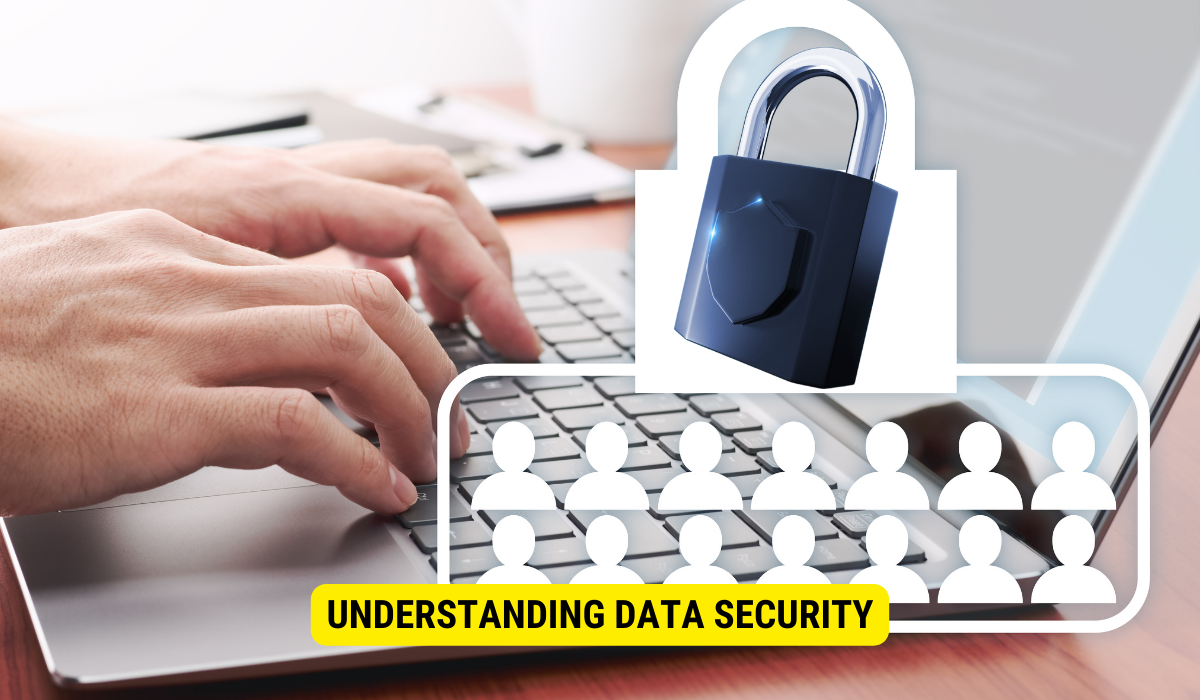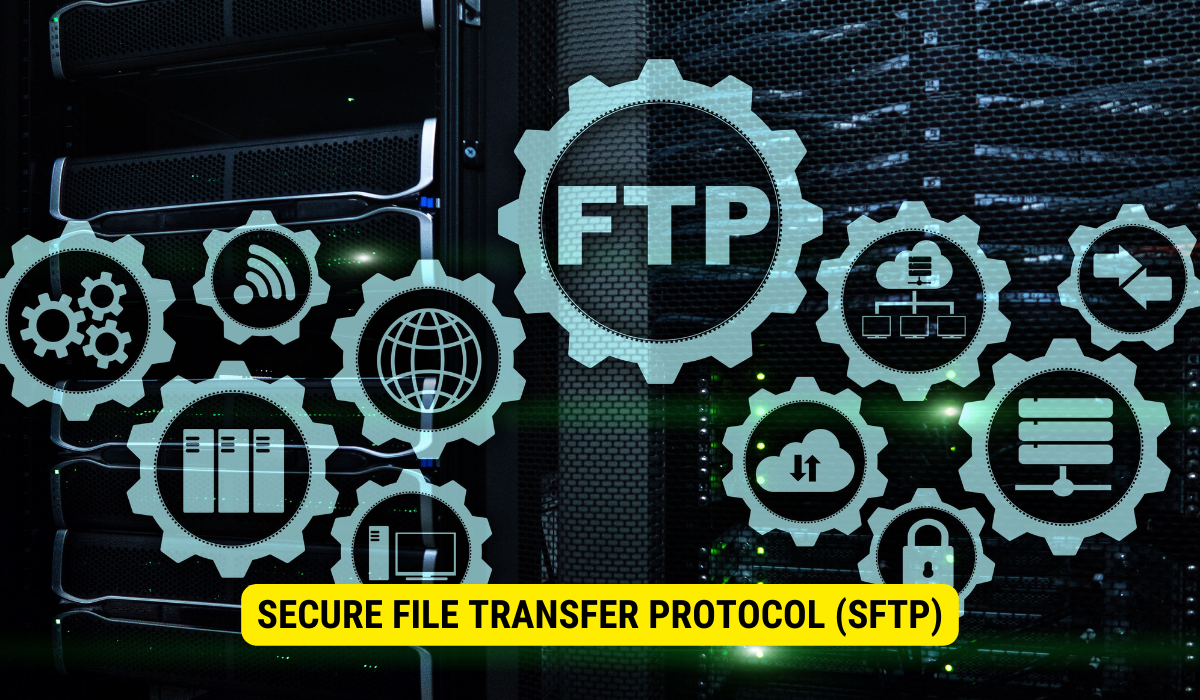Secure methods for accessing, managing, and transferring data files include strong password protection, encryption, two-factor authentication, virtual private networks (VPNs), secure file transfer protocols (SFTP), and HTTPS.
In today’s digital age, where data breaches and unauthorized access are becoming increasingly prevalent, it is of utmost importance to prioritize the security of our data. Whether it’s personal files or sensitive business information, finding secure methods for accessing, managing, and transferring data files is crucial. I will aim to shed light on this pressing issue and provide insights into the most effective practices to ensure data security.
Understanding Data Security
Data protection includes a range of strategies and procedures aimed at shielding important information from unauthorized viewing, modification, or loss. In our current digital environment, where information is predominantly stored and shared electronically, the assurance of its safety is of utmost importance. Data protection primarily focuses on ensuring access, managing, and securely transferring data.
A pivotal element of data protection is ensuring secure access. This entails creating solid measures to dictate who has the right to access specific information and under which conditions. By putting rigorous authentication and access controls in place, organizations can ensure that only verified individuals or sanctioned systems have entry to sensitive data. This approach significantly minimizes the likelihood of data leaks or unwanted breaches.
Fundamental principles in data management are essential to upholding data security. Data management pertains to the methodologies and tactics used in handling, controlling, and preserving data throughout its existence. Efficient data management approaches encompass data categorization, storage timelines, and elimination methods. By sorting data based on its importance and setting apt access permissions, businesses can ensure information is reachable only to those requiring it. Moreover, they can elevate their security stature by defining precise data storage durations and safely removing outdated data.
Secure data transfer is a vital component in data protection. It pertains to moving data from one place or platform to another. Carrying out this action securely is paramount to avoid potential interceptions or alterations. Incorporating safe data transfer methods, like data encryption, and utilizing secure transfer protocols like SFTP ensures sensitive details stay private and out of reach from potential online threats. Encrypting data when moved helps organizations prevent unsanctioned access and upholds the data’s originality.
Grasping the concept of data protection is critical for any entity managing sensitive data. By introducing strong protocols for data access, efficient data management practices, and secure data transfer techniques, organizations can reduce the threat of breaches and preserve the secrecy, accuracy, and accessibility of their essential data.
Different Methods for Accessing Data Securely
When it comes to securely accessing data, several methods are available, each with strengths and weaknesses.
With the rising occurrence of data breaches and cyber threats in our current digital era, it’s imperative to have strong protective measures for sensitive details. Let’s delve into some of the most efficient ways to access data safely.
Password Protection and Encryption
One prevalent approach involves the use of password safeguards and data encryption. By adopting robust, distinct passwords and encrypting data, both when stored and during transmission, individuals and entities can notably boost their data’s security.
Passwords serve as the initial barrier against unauthorized entries. Formulating intricate passwords that aren’t easily deduced is vital, and refraining from reusing the same password across different accounts is vital. Moreover, a password management solution can assist users in creating and preserving robust passwords safely.
Encryption is fundamental in shielding data from unsolicited access. It pertains to transforming readable text into encoded text through a specific encryption technique. This guarantees that should the data be captured, it remains indecipherable without the associated decryption key.
Two-Factor Authentication
Two-factor authentication (2FA) enhances protection by mandating that users present a second verification method, like a fingerprint or a distinct code produced on a smartphone. This approach reduces the likelihood of unsolicited access because the secondary verification method offers another layer of defense even if a password gets breached.
Incorporating 2FA introduces an added phase to the sign-in procedure, complicating unauthorized entry attempts. Biometric verification, whether through fingerprint or face recognition, offers a superior security measure since it’s based on distinct physical traits that are challenging to duplicate.
Furthermore, using time-based one-time passwords (TOTP) generated on a mobile device adds a layer of security. These codes are valid for a limited time and cannot be reused, making it extremely difficult for attackers to access an account.
Virtual Private Networks (VPNs)
Virtual private networks (VPNs) establish a protected link between a user’s device and an external server, ensuring all transmitted and received data is encrypted. VPNs come in handy when retrieving confidential information over public Wi-Fi or linking to distant servers across various regions.
While using a VPN, all data communication is encrypted, thwarting unsanctioned entities from seizing and reading the data. This becomes pivotal when connected to public Wi-Fi channels, which typically lack robust security and are prone to breaches.
Additionally, VPNs enable users to navigate past geographical barriers and access content limited to certain regions. They bolster anonymity and confidentiality by disguising the user’s IP address and directing online traffic via an external server, further amplifying data protection.
Opting for a trustworthy VPN service, which embraces potent encryption methods and refrains from storing user activity logs, is crucial. Also, routinely refreshing the VPN application ensures that all security gaps are addressed, upholding the sanctity of the protective link.
By adopting these strategies, individuals and institutions can amplify their data security and ward off unsolicited intrusions. Yet, it remains essential to remain alert and consistently update one’s security measures to counter the ever-evolving challenges in the digital realm.
Secure Techniques for Managing Data
Data management involves implementing strategies and practices to store, organize, and protect data securely. Businesses and organizations must have robust data management systems to safeguard sensitive information and ensure its availability when needed.
Data Backup and Recovery

Data backup and recovery play a vital role in data management. Regularly backing up data ensures that data can be easily restored during a hardware failure, natural disaster, or cyber attack, minimizing downtime and data loss. Organizations often employ various backup methods, such as full, incremental, or differential backups, depending on their specific needs and requirements.
Additionally, organizations may store their backups in different locations or utilize cloud-based backup solutions. This redundancy further enhances data protection and ensures that even if one backup location or system fails, other copies are still available for recovery.
Data Redundancy and Replication
Data redundancy and replication are techniques that create multiple copies of data and distribute them across different locations or systems. This approach provides greater data availability and safeguards against data loss in case of hardware failure or other unforeseen events.
Redundancy involves creating duplicate copies of data within the same system or storage device. This ensures that if one copy becomes inaccessible or corrupted, the duplicate copy can be used as a backup. On the other hand, replication involves creating copies of data and distributing them across multiple systems or locations. This technique provides backup options and improves data access speed and performance.
Role-Based Access Control
Role-based access control (RBAC) is an essential component of data management. RBAC assigns permissions to users based on their roles within an organization. RBAC reduces the risk of unauthorized access or accidental data exposure by ensuring that users only have access to the data necessary for their specific duties.
RBAC systems typically involve the creation of user roles, such as administrators, managers, or regular employees, and assigning appropriate access privileges to each role. This granular control over data access helps organizations maintain data confidentiality, integrity, and availability. RBAC also simplifies user management and reduces the administrative burden of individual granting and revoking access rights.
In addition to RBAC, organizations may implement other access control mechanisms, such as two-factor authentication, encryption, and audit trails, to enhance data security and ensure compliance with industry regulations.
Safe Practices for Transferring Data Files
Transferring data files securely is crucial to protect sensitive information during transit.
Secure File Transfer Protocol (SFTP)
Secure File Transfer Protocol (SFTP) encrypts file transfers using the Secure Shell (SSH) protocol. This ensures that files are protected from interception or tampering, making it an ideal choice for secure file transfers over untrusted networks.
Hypertext Transfer Protocol Secure (HTTPS)
Hypertext Transfer Protocol Secure (HTTPS) adds an extra layer of security to regular HTTP connections by encrypting data using SSL/TLS protocols. This is particularly important when transferring data over the internet, as it prevents unauthorized parties from eavesdropping or hijacking sensitive information.
Email Encryption
Email encryption ensures that the contents of an email message are secured and can only be accessed by the intended recipient. Organizations can protect sensitive information from being intercepted or compromised by encrypting the email message and any attachments.
Key Takeaways
- Secure data access is crucial in today’s digital environment, with strong authentication and authorization protocols being central to safeguarding data.
- Effective data management practices, such as data backup and role-based access control, ensure data availability and security throughout its lifecycle.
- Using protocols like SFTP and HTTPS, secure data transfer protects data during transit, shielding it from potential interception or tampering.
- Encryption is a cornerstone of data security, whether in data storage, access, or transfer.
- Regularly updating security measures and staying informed about the latest threats is essential for maintaining data security.
FAQs
What is the role of encryption in data security?
Encryption converts data into an unreadable format, ensuring it remains inaccessible and indecipherable to unauthorized users without the appropriate decryption key.
How does two-factor authentication enhance data security?
Two-factor authentication requires two forms of verification, adding an additional layer of security by ensuring that the data remains protected even if a password is compromised.
Why are VPNs important for secure data access?
VPNs create a secure connection between a device and a server, encrypting all data transferred, making it essential for secure data access, especially over unsecured networks like public Wi-Fi.
How does role-based access control contribute to data management?
Role-based access control assigns permissions based on user roles, ensuring individuals only access data necessary for their specific duties reducing risks of unauthorized access or accidental data exposure.
What is the significance of SFTP in secure data transfer?
SFTP encrypts file transfers using the Secure Shell protocol, protecting files from interception or tampering, especially over untrusted networks.
Conclusion
In conclusion, securing data access, management, and transfer is paramount in today’s digital landscape. By implementing strong access controls, robust data management practices, and secure transfer techniques, individuals and organizations can safeguard their valuable data against unauthorized access and potential data breaches. Embracing these secure methods provides peace of mind and demonstrates a commitment to data privacy and protection in an increasingly connected world.
